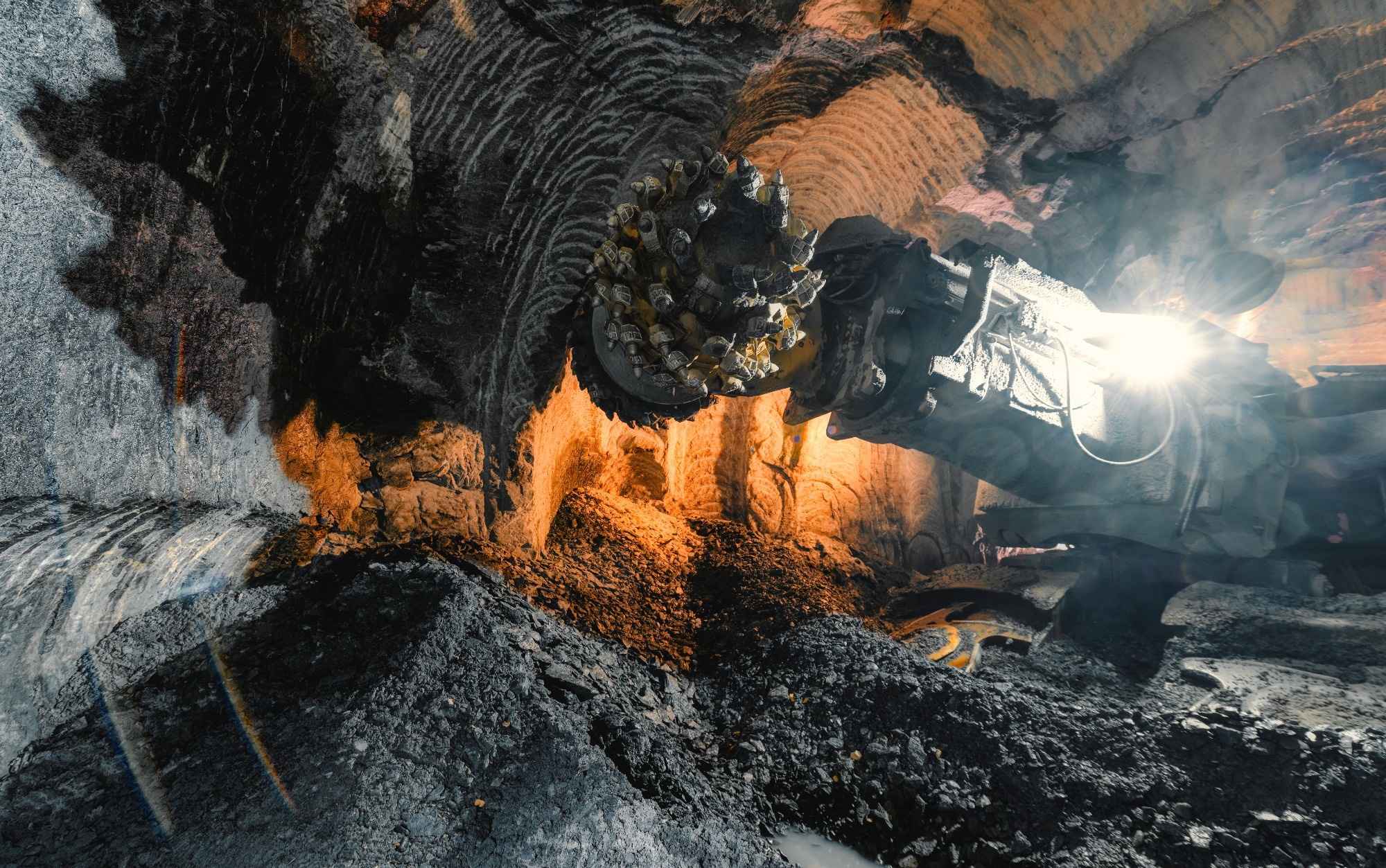In a paper published in the journal Scientific Reports, researchers explored the role of boom-type roadheaders in coal mining, addressing challenges in real-time monitoring and adaptive cutting. They introduced a digital twin system integrating shape, performance, and control elements, with components including physical space, service space, and twin space.
 Study: Digital Twin-based Roadheaders for Enhancing Coal Mining Efficiency. Image credit: Nordroden/Shutterstock
Study: Digital Twin-based Roadheaders for Enhancing Coal Mining Efficiency. Image credit: Nordroden/Shutterstock
Utilizing numerical simulation, artificial intelligence (AI), and multi-source data fusion, the system predicted mechanical performance and managed cutting arm swing speed. Experimental results showed promising accuracy, with an average absolute error of 10.38 MPa and an update interval of 0.34 s for real-time stress monitoring. The proposed control model enabled adaptive adjustments within approximately 0.3 s, enhancing roadheaders' adaptability in complex coal and rock formations.
Related Work
Past work has extensively explored the challenges in roadheader operation within hazardous coal mining environments, highlighting issues of poor visibility and fluctuating coal and rock conditions. Digital twin technology, as exemplified by Grieves' model, has been applied to monitor and optimize equipment performance.
Previous studies have utilized digital twin technology in tunnel excavation and coal mining, enabling tasks such as performance prediction and real-time monitoring. Researchers have proposed adaptive cutting control methods based on various algorithms, yet real-time monitoring of roadheader mechanical performance still needs to be improved. While existing approaches rely on sensors for monitoring, they often fail to provide real-time mechanical performance data, hindering comprehensive adaptive control of roadheaders.
Integrated Digital Twin System
Developing a twin system involves meticulously constructing an integrated digital twin system tailored for roadheaders in coal mines. This initiative aims to facilitate real-time stress monitoring and adaptive control, which is crucial for ensuring operational efficiency and safety in challenging mining environments. Key components include dataset construction through numerical simulations, twin model construction using deep learning techniques, and the implementation of neural network model predictive control (MPC) for regulating the cutting arm's swing speed.
Researchers utilize multi-sensor data and advanced computational methods within the digital twin system to enable precise monitoring, fault detection, performance prediction, and control optimization, consequently enhancing the intelligence and reliability of mining equipment.
The dataset construction process begins with finite element technology, which enables the numerical simulation of roadheader mechanical performance, including stress and deformation analysis. Various parameters such as vibration acceleration, hydraulic cylinder pressure, and cutting head speed are measured to capture the machine's behavior during operation. This dataset is the foundation for training the twin model, which leverages deep learning algorithms, particularly bidirectional LSTM networks, to predict stress patterns and dynamically inform control strategies. Additionally, the construction process involves meticulous meshing, contact setting, and boundary condition setting to accurately simulate real-world conditions and generate reliable training data for the twin model.
The control strategy implemented within the digital twin system utilizes stress data to adjust the cutting arm's swing speed dynamically, ensuring optimal performance and preventing overload damage. Integrating stress thresholds with control parameters enables adaptive control of the road header's operation, enhancing safety and efficiency in coal mining operations. The neural network MPC controller facilitates real-time adjustments based on predicted stress levels, optimizing cutting parameters and ensuring stable performance. Moreover, the twin space, visualized using the UE5 physics engine, provides a comprehensive platform for monitoring, analyzing, and controlling the road header's behavior in a 3D environment, further enhancing operational visibility and decision-making capabilities.
Twin System Feasibility Validation
Rigorous laboratory testing actively confirms the feasibility of the "shape-performance-control" integrated twin system for roadheaders. The twin test system encompasses electromechanical and hydraulic components of the roadheader, along with the digital twin system, upper computer measurement, control system, and data acquisition system.
Through synchronized data collection and analysis, the twin system accurately predicts stress patterns in structural parts during cutting operations. The comparison between predicted and measured stress data demonstrates a close alignment, validating the effectiveness of the twin model. However, challenges arise in predicting stress variations in specific components due to the inherent complexity of real-world conditions and limitations in numerical simulations.
Moreover, the adaptive control strategy implemented within the twin system proves its efficacy in dynamically adjusting the cutting arm's swing speed based on predicted stress levels. The system's successful demonstration underscores its transition from a passive state to an active one, adeptly responding in real-time to fluctuations in load conditions. This active responsiveness enables the optimization of cutting parameters and is a proactive measure against potential structural damage.
The response speed of the control model is rapid, ensuring timely intervention to mitigate potential risks during cutting operations. Despite these advancements, there remain opportunities to enhance the accuracy and robustness of the twin model, particularly in predicting stress variations across different components and under varying operational conditions. Future research efforts should focus on refining the twin model through customized analysis and incorporating diverse factors to improve prediction accuracy and reliability, ultimately advancing the intelligence and efficiency of roadheader operations.
Conclusion
To sum up, the "shape-performance-control" integrated twin system for roadheaders underwent rigorous laboratory testing, confirming its feasibility. The twin system accurately predicted stress patterns and dynamically adjusted cutting parameters in response to changing load conditions through synchronized data collection and analysis.
This active responsiveness demonstrated the system's effectiveness in optimizing cutting operations and preventing structural damage. Despite challenges in predicting stress variations, the system's successful demonstration highlighted its potential to enhance roadheader operations' intelligence and efficiency with further refinement.